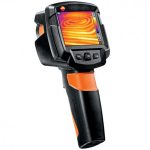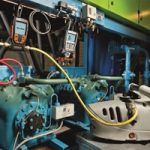Infertility is a growing problem, not only in Australia, but around the world. As a result, IVF is more accepted these days and a lot of people are coming forward for treatment.
According to IVF Australia, 15 per cent of couples of reproductive age are affected by infertility because of either genetic, medical, surgical or reasons where the cause remains unknown. Fortunately, technology has improved significantly in recent years and has allowed InVitro Fertilisation (IVF) to become an efficient way of conceiving a baby.
How does IVF work?
IVF is basically the process where an egg is fertilised by sperm outside the body.
Once this has taken place and the egg is fertilised, it becomes an embryo, and can be grown and cultured for up to six days and then transferred into the woman’s uterus. If successful, this should result in a pregnancy for the couple.
The success rate of this process is increasing as well. Nine in ten (90 per cent) of patients are pregnant within three cycles and more than 40 per cent after just one cycle. This is higher than when the initial technology was introduced more than 30 years ago.
IVF Australia
One of the leading companies in this field is IVF Australia. With over 34 fertility specialists across NSW, the IVF and pathology company boasts the first IVF baby conceived and born in the state back in 1983.
However, one of the main responsibilities as embryo culture methods get better, is the freezing of eggs, sperm and embryos, and the care and management of these frozen eggs, embryos and sperm for patients. Most of the samples are irreplaceable and any loss will be a tragedy for the couple involved.
Safe storage
IVF Australia’s Scientific Director, Dr Simon Cooke, is responsible for all the NSW laboratories on behalf of their patients which includes six embryo labs, nine sperm labs and 85 liquid nitrogen (LN) tanks.
All freezing requires samples to be stored at -196°C and Dr Cooke said “specialist IVF clinics have to manually check the depth of the liquid nitrogen, but most laboratories have no electronic monitoring devices on their liquid nitrogen tanks, and no knowledge of the exact temperature on the inside of the tanks at all stages of storage, especially on the very rare occasions if there is a problem with one of the tanks”.
However, with the introduction of Testo’s automated temperature monitoring system – Saveris – this process has become a lot easier.
“All tanks are now electronically monitored, and we can set alarm limits that have defined criteria, based on the exact temperatures as monitored inside the tanks, where the samples are stored, Saveris also monitors the software and hardware related to the tank,” Dr Cooke explained.
The Saveris system can measure temperatures from minus -200°C up to 1760°C, as well as humidity.
Dr Cooke said he was recently able to check the real-time LN tank temperatures using his mobile phone, all the way from a New Zealand ski field.
“Saveris is a wireless system which is a huge advantage to us, it means there are no cables and it’s much safer for staff around the tanks. The software also tells you about the integrity of the hardware related to the tank monitoring,” he stated.
“Saveris is a very efficient and worthwhile system. Patients are placing a huge amount of trust in us to look after their embryos and sperm. It’s a small price to pay for the quality control of our liquid nitrogen tanks.”









 Reduce cooking oil costs while ensuring quality
Reduce cooking oil costs while ensuring quality Expert knowledge on CO2 monitoring
Expert knowledge on CO2 monitoring Refrigeration knowledge - in 3 modules
Refrigeration knowledge - in 3 modules



